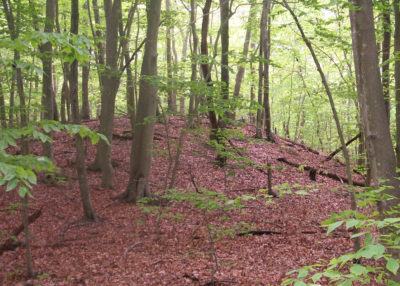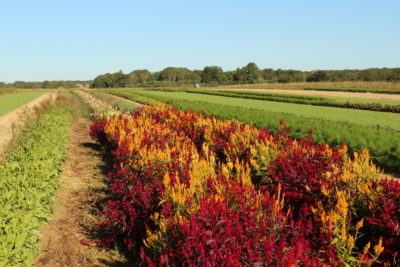Accabonac Preserve
About
Nestled on the northern flank of the Ronkonkoma moraine is the Trust’s 92.9 acre Accabonac Preserve. In January of 1998 the de Cuevas family generously provided the funding to the Peconic Land Trust to acquire the undeveloped woodlands from the Potter family at a bargain sale (less than the fair market value). We thank them for their tremendous gift to the community.
The Trust was able to work with the Potter family and the donors to see this beautiful land remain -- providing a lush forest for the community. We thank the Potter family for making this preservation plan possible. The protection of this land adds significant forest preserve to the Springs hamlet and provides hikers with wonderful trails that connect to the Paumanok Path. Trail heads can be found on both Accabonac Road and Springs-Fireplace Road. (See the trail head kiosk here.)
Additionally, a few years later, the Trust helped the neighboring landowners, the Lange family, and the Town of East Hampton with the protection of the family's land in March of 2004. The Town purchased the 12.8 additional acres (three building lots) of land along Springs Fireplace Road in March 2004. The property is contiguous with the Trust's Accabonac Preserve. The Town-owned property includes two one-acre lots that were purchased using the Town's affordable housing fund, leaving open possible affordable development in the future. The remaining 10.8 acre lot was purchased through the Town's Community Preservation Fund and has been protected forever.
![block.image[0].title](/assets/images/1-7-10-013.jpg)
The wooded property of the Accabonac Preserve is located in the aquifer overlay district, and had the development potential of 37 homes. A 7.2-acre portion of the property is subject to restrictions held by the Town of East Hampton. The Preserve is in close proximity to other Town-protected properties and Trust Preserves. After acquisition, the Trust was given a small house that was moved to the property to provide housing for our Quail Hill Farm apprentices and staff.
When hiking the trails at Accabonac Preserve you will see evergreen shrubs, called sheep laurel, low bush blueberry, and bayberry. The sandy soils of the area have been colonized by a variety of sun-loving plants commonly found in the pine barrens and in the back dunes community of our bay and ocean beaches: scrub oak, beach heather, bearberry and reindeer lichen. Check out the East Hampton Trails Preservation Society for more information on hiking in the Town.
The woodlands in the North Amagansett area of which the Accabonac Preserve is part — approximately preserved 600 acres — provide critical habitat for a wide variety of sensitive species including the great horned owl, innumerable migrating birds, and the eastern box turtle. Equally important, the preserve land is part of the Town of East Hampton’s Water Recharge Overlay District, sitting above the deepest part of the aquifer, our sole source of drinking water. Through land conservation, we are all working together to improve the quality of our precious water resources.
Have questions about the Accabonac Preserve, its trails and ecology? Contact Matt Swain, Vice President at 631-283-3195 or MSwain@PeconicLandTrust.org
Visitor Information
The trails of Accabonac Preserve can be accessed from Accabonac Road (east side) just north of Abraham's Path or from west side of Springs-Fireplace Road, just south of Grant Avenue. In both of these locations you will find the kiosks with information on the trails.
Download
Accabonac Preserve
Accabonac Road, East Hampton, NY 11937
Things To Do
Hiking
Birdwatching
Photography
Nature Study
Get Involved
Interested in honoring a loved one or commemorating a milestone? Support our Memorials at Preserves program and deepen your connection to this special place.



